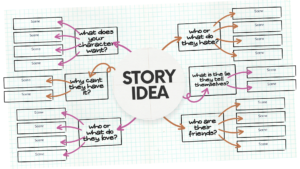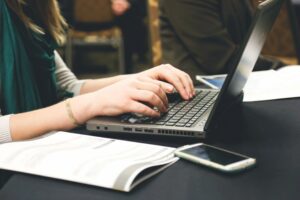Pacing what do we mean when we talk about pacing in an novel? Pacing is how the reader perceives the speed of the story so when we talk about pacing we’re talking about the readers experience and how they feel reading through the novel. Whether they feel breathless, whether they’re comfy and cozy, whether they’re titillated and excited or if they are bored because you’re pacing is off. Pacing that is off will yank a reader out of their experience and has led more than one reader to finish a novel.
Writers who excel at pacing often get reviews from readers who say “I couldn’t’t put this book down.” “I couldn’t wait to find out what happened next.” “I stayed up all night reading this book because I wanted to know how it was going to turn out.” “This book is like a warm hug I didn’t want to end.” “It was wonderful to settle down into the story and feel the world disappear around me.”
That’s what excellent pacing can do for your novel. The primary tools for pacing your novel are sentence length, scene length, chapter length, word choice, and fiction length. No matter if you are writing flash fiction or a 900-page novel, what the point is the length of your work affects how your readers experiences it and what expectations they bring to the story. If you are writing genre fiction this is particularly important.
People who read thrillers want to be thrilled. They don’t want to be mired down in the middle of the book wondering why their thriller isn’t thrilling them. Thriller readers want the story to have rapid pacing that drags them along, ready or not. If you write cozy mysteries, you’re going pace your story differently because cozy story readers want to experience the story like a warm comforter on a winter night. They want to wrap themselves in the narrative trusting the auth rot tell them the story at a pace that is comfortable for the reader. They are reading cozy stories whether it’s cozy fantasy or cozy mystery because they want to be tucked into that world and enjoy their reading experience at a leisurely pace.
Romance readers, depending on the reader want different paced story. Some want a slow burn, others want a story want to get the naughty exciting bits right away. Some want the pacing of a romantic thriller, and others want a cozy romance. Science fiction and fantasy readers tend to enjoy long stories that are well paced with wonderful world building where the exciting bits the stuff that makes you turn the page.
This is where knowing who you’re writing your story for comes into play. Knowing what story you want to tell is really going to help you with your pacing.
When trying sort the pacing of your novel use your past reading experiences. Think of those books that kept you up all night long no matter what your obligations were the next day. And those books you slugged reading through because it was required reading for a class, other times because you were into torturing yourselves finishing a book you weren’t enjoying. As I’ve gotten older I do that way less often. If I am not feeling a story, I’ll just stop. I may go back to the book later because I might be the frame of mind to finish it. Which is something to remember. You don’t know what frame of mind or expectations your reader is bringing to their reading experience. You can’t control or anticipate their attitude but you can do is provide your reader with well written, well-paced story.
For me choice word choice is one of those things so many new writers overlook. The words you choose affect your reader as much as anything in your book. When I refer to word choice when I say asphalt versus black top, they’re basically the same word if I say parking lot, that’s a slower word choice. Parking lots can be made of just about anything, packed dirt, asphalt, grass, pavers, brick, loose stones, concrete, it slows the reader down as they sort through the various kinds of parking lots to come up with one that fits their idea of the story, which takes time.
The length of words how snappy they sound affects pacing. Languid is one of my favorite words, because you feel it you say it. Languid is sensual word and that conveys and taking your time to do something at a leisurely pace. If you write that your character strode down the street you story moves at a different pace than it does if you write your character strolling down the street. Both of those words feel different to your reader and influence how the story moves along.
No less important is sentence length. Long drawn-out sentences make your reader slow down because they have to concentrate to focus on what you’re working to convey in that sentence. Complicated sentences require more focus than short snappy sentences. Short direct sentences allow your reader to move quickly through the paragraph and on to the next thing.
If you’re writing a fight scene, skip the paragraph length sentences. If you’re writing an argument or break up or any other intense negative emotion you want to lean into snappy sentences for the dialogue. If you are explaining details of a crime, that might be the time for long sentences. The length of sentences affects the readers experience of the characters experiences. For example a scene that involves grief. Do you want your characters and the reader wallowing in grief? Write long detailed sentences about the characters loss, the drive out to the graveyard and the burial. Do your characters want to ignore or skip over their grief, do they just want to put it behind them? Write short sentences and paragraphs, showing how they are avoiding their grief, These are the details that often escape new writers, but pacing is one of those things that will bring people back to your books, if they like how they felt while they were reading. If they enjoyed the sensation of being so swept away in your story they couldn’t’t wait to get back to your book or they couldn’t wait to find out what happened nest. If they couldn’t’t stand leaving the world and the characters they immediately read you book again or slow their reading down because they couldn’t wait for it to be over.
Many cozy readers love to return to their favorites work because they enjoy the safe cozy feeling of knowing what to expect.
The next tool in your pacing took kit is scene length. Short scenes versus long scenes versus medium scenes. A scene can be as long as a paragraph or longer. It can be two pages three pages, or five pages. It depends on what’s going on in the scene and how you want your readers to experience the scene.
Is it a pivotal scene? The big reveal? Is it something you want them to remember or understand? The thing to remember with scene length is that not all the things you want to your reader to know need to go into one scene. Many new writers and particularly neurodivergent writers, fall into the category of writers who know volumes about their subject.
They’ve done hours of research and they’re carrying it all around in their head and they want to share that knowledge with you. Or they have written pages long back story for each of their characters and they want you know what they know about them. Sharing details and information is for many neurospicy folks a love language. We want you to know all the things that we know because we think is so cool we want everyone to know it. All of that information is rambling around in our head. Neurodivergent folks are prone to info dumping, all at once all the things that we know often overwhelming our family, friends and random strangers and if we are writers, our readers.
While may want your reader to know all the cool things you found while researching your novel, or the amazing backstories of your charters, dumping all of the information out in one scene or chapter is not the way to do it. It is the number one thing I see new writers do that trashes their pacing and negatively affects their narrative They have great stories to tell, they’ve done amazing research, and really created wonderful characters and they want you to know it, so they spill it all out in blocks of text that don’t have anything to do with the stories plot or character development.
It is fine to share your research and character backstory with your readers, but you want to use the sprinkle method. That’s where you sprinkle your research throughout the book for your readers to absorb it in small bits. It’s overwhelming to absorb any large volume of information all at once but trickle it out over your narrative, in little bits backstory, and pieces of observations and research, that you’ve done also respects your readers time and focus.
We talked about length of scene now let’s talk about the length of your fiction. Flash fiction absolutely astounds me. It is amazing, the emotions that can be generate in so few words. The same can be said for short stories as well. I love a good short story. I like a good novella. I love shorter novels and I love longer novels when I’m in the mood. I’ve read several fantasy works that the books top out right around 700 pages and I enjoyed all 700 pages because the writer was so good at pacing and I was sucked in and couldn’t wait to see what was going to happen on the adventure.
Maintaining pacing over a long novel no different than maintaining pacing for flash fiction. Every word choice, sentence length, scene length and other choices count. Every scene counts and that’s really what I’m trying to get you to understand, of all the choices you make when writing, your pacing choices matter most.
I want you to embrace that idea when are revising your novel, because revisions are where you fix the pacing. I am a firm believer in a fast rough first draft and believe that is the only way many writers are going to get their book written. They have to just write it. Get it out of their heads and then fix any problems.
I fix pacing at the same time I’m fixing structure as the two are very intertwined. I image structure as the trellis that pacing grows on, as your story progresses. I’ll link my podcast about structure in the show notes. I’ll also add a link for a free pdf of thirty pacing tools and how to use them as well as a link for the book Make a Scene by Jordan Rosenfeld. It explains offers a wonderful explanation how structure and pacing work together in scenes and your novel scenes. Novels are made up of scenes and writers need to understand how they work together to move your reader through your story.
The final thing I want you to consider is how important your pacing is so that readers finish your book. Nothing will make a reader give up on story faster than wonky pacing. Even if you start out strong with great first couple of chapters, if pacing falls apart in the middle, readers will stop reading. Cut the scenes that don’t do anything. Insert scenes or revise scenes that don’t move the story along. Make sure every scene is doing its job, to move plot along or show character development. If your mind is wandering reading through your manuscript, you’ve got a problem and you need to fix it. You fix it by going back and looking at your word choices, your sentence length, your scene length, and your chapter length. Read through your narrative, are you telling an interesting story that’s going to encourage your readers to turn the page? Have you told an entire story in each chapter and not left them wondering what happens next?
Each scene should end on an event that makes you want to read more. Make something happen particularly at the end of a scene or paragraph that makes the reader go “wow, I wonder what’s going to happen next?” That’s the experience you want your readers to have, that’s what keeps readers coming back to read your next book and the book after that. Mastering pacing can be challenging but it part of the craft of novel writing and can be learned. Keep at it. Use these tools to keep your readers turning pages and until next time keep writing.
Don’t forget your free pdf on novel pacing here: https://BookHip.com/RXVGPCX
If you have not check out my podcast you can find it on most podcast listening platforms, or check it out here on Podbean: https://www.podbean.com/eas/pb-fwtcv-1661a39








